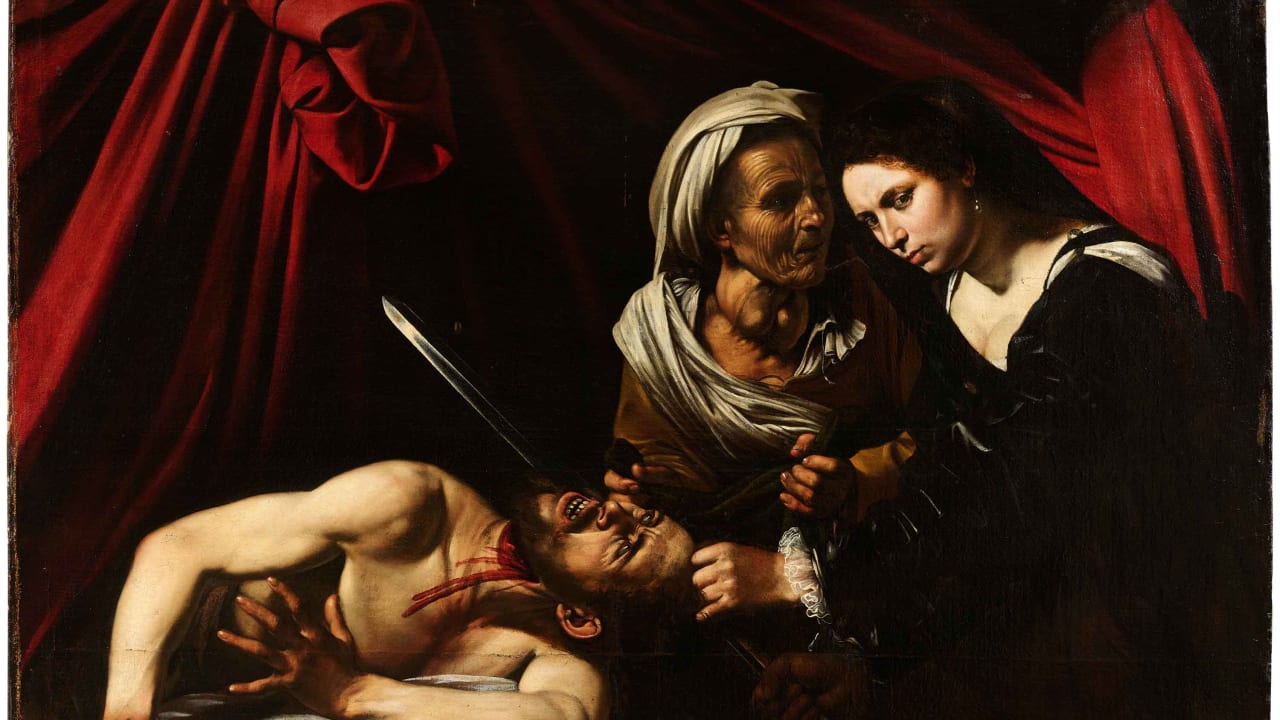
It was a conclusion as surprising as the provenance of the work itself: Days before the painting Judith Beheading Holefernes, discovered in an attic in 2014 and later attributed to Caravaggio, was due to be sold at auction for as much as $170 million, it was snapped up in a mysterious private sale. Now, the buyer—whose offer was so good it “could not be ignored,” according to the dealer who authenticated the work—has been revealed. He is billionaire art collector J. Tomilson Hill, the New York Times reports, citing a source with knowledge of the sale.
Speculation that Hill was the anonymous buyer emerged earlier this week in the French publication Gazette Drout. So far, the auction house Marc Labarbe Auctions has refused to divulge specifics on the deal, citing a confidentiality agreement. But it has stated that the buyer is an international collector who plans to lend the work to a major museum. Hill did not respond to artnet News’s request for comment.
The painting was due to be sold this week at the Toulouse-based auction house for an estimate of €100 million to €150 million ($114 million–171 million). Eric Turquin, the Parisian Old Master dealer and appraiser who authenticated the painting, said the buyer’s offer was “exceptionally more” than the planned starting bid of €30 million ($34 million).
J. Tomilson Hill in his New York apartment. Photographs by Ryan Shorosky courtesy of Christie’s.
Hill, the former chairman of the Blackstone Group, is no stranger to extravagant purchases, and he is also one of a small handful of collectors known to spring for both contemporary and Old Master trophies alike. He opened the Hill Art Foundation, a private museum in Chelsea, earlier this year with a splashy exhibition of works by Christopher Wool. In 2015, he spent just over £30 million, or about $44.7 million, on Portrait of a Young Man in a Red Cap (1530) by Jacopo Pontormo, which the British Department of Culture, Media, and Sport tried unsuccessfully to keep in country with a temporary export ban.
Hill’s new prize poses its own challenges. Experts are divided over whether the work is truly by Caravaggio, which would make it only the 66th painting by the artist in existence. The world first learned of the work in 2016, when it was unveiled by the French Ministry of Culture. The government placed a 30-month export ban on the painting, which expired in December, after France passed on a purchase. When the work was exhibited at Milan’s Pinacoteca di Brera, one art historian resigned from the board in protest. (The museum presented the attribution to Caravaggio with an asterisk.)
Believers in the work cite its overall quality and the presence of pentimenti beneath the surface, which show how the artist reworked the composition during its creation—less likely in a copy.
Michelangelo Amerighi da Caravaggio (1569 – 1609) is regarded as the greatest Italian painter of the 17th Century. Photo: Hulton Archive/Getty Images.
Some suspect that Keith Christiansen, the chairman of the Met’s European paintings department, advised Hill on the purchase. The curator has previously confirmed the painting’s authenticity, stating in a report that it is “fully consistent with the work of Caravaggio” (though he acknowledged there may have been an “intervention of a second hand” in one area).
Even if the work was only “begun by Caravaggio and finished by another artist,” as Old Master specialist Fabrizio Moretti told the Times, its sale would still be a landmark moment in the Caravaggio field and the Old Master market at large, especially as only six paintings attributed to the master are in private hands.
Christiansen may be looking to include the work in the Met’s soon-to-reopen European galleries. We reached out to representatives from the Met and the Frick Collection, where Hill has previously lent works, about whether they plan to show his new purchase, but did not hear back by press time. Hill has also lent high-profile treasures to the Getty in Los Angeles.